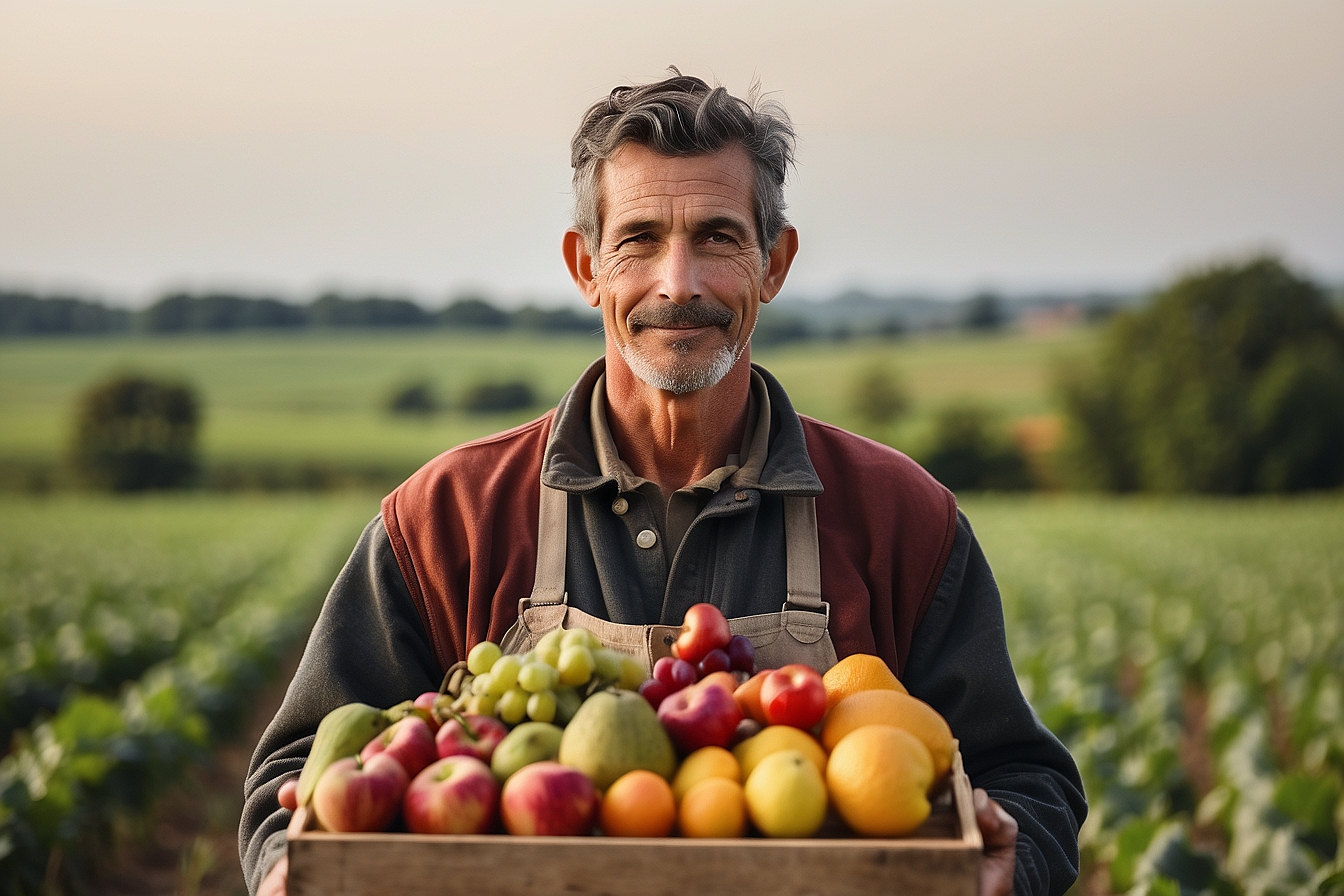Have you ever wondered how the ingredients that grace your plate make their journey from the farm to your kitchen?
Well, hold onto your chef’s hats because today, we’re diving deep into the world of data-driven farming for culinary ingredients.
Yes, you heard that right – data isn’t just for tech geeks and number crunchers; it’s revolutionizing the way we grow, harvest, and enjoy our favourite foods.
What Exactly is Data-Driven Farming?
Before we get into the nitty-gritty of how data is transforming the culinary ingredient landscape, let’s take a moment to understand what data-driven farming is all about.
Data-driven farming, also known as precision agriculture or smart farming, is a modern approach to agricultural management that leverages technology and data analytics to optimize various aspects of farming practices.
At its core, data-driven farming involves the collection, analysis, and application of data to make informed decisions that improve crop yield, efficiency, and sustainability.
Data Collection:
Data-driven farming relies on the collection of vast amounts of data from various sources. These sources may include:
- Sensors: Deployed throughout fields, sensors measure a range of variables such as soil moisture, temperature, humidity, and nutrient levels.
- Satellite Imagery: Satellite imagery provides high-resolution data on crop health, growth patterns, and environmental conditions.
- Drones: Drones equipped with cameras and sensors capture detailed images and data from above, allowing farmers to monitor crop health, detect pests or diseases, and assess field conditions.
- Weather Stations: Weather stations provide real-time data on temperature, precipitation, wind speed, and other meteorological factors that influence crop growth.
Data Analysis:
Once data is collected, it is processed and analyzed using sophisticated algorithms and data analytics tools. The goal of data analysis in farming is to extract actionable insights and patterns that can inform decision-making.
Some common analyses in data-driven farming include:
- Predictive Analytics: By analyzing historical data alongside current environmental conditions, predictive analytics can forecast future trends such as crop growth, pest outbreaks, or optimal harvest times.
- Machine Learning: Machine learning algorithms can identify complex relationships within agricultural data, enabling tasks such as disease detection, yield prediction, and weed identification.
- Spatial Analysis: Spatial analysis techniques utilize geospatial data to assess field variability and optimize resource allocation, such as determining optimal irrigation patterns or identifying areas for targeted fertilizer application.
Application of Insights:
The insights gained from data analysis are then applied to inform decision-making and optimize farming practices.
These applications might include:
- Precision Application of Resources: With precise data on soil conditions and crop needs, farmers can apply fertilizers, pesticides, and irrigation water only where and when they are needed, reducing waste and environmental impact.
- Optimized Planting and Harvesting: Data-driven insights help farmers make informed decisions about planting schedules, crop rotations, and harvest timing to maximize yield and quality.
- Integrated Pest Management: By monitoring pest populations and environmental conditions, farmers can implement targeted pest control measures, reducing the need for broad-spectrum pesticides and minimizing harm to beneficial insects.
- Resource Efficiency: Data-driven farming enables efficient use of resources such as water, fuel, and labor, leading to cost savings and environmental sustainability.
Benefits of Data-Driven Farming:
Data-driven farming offers a multitude of benefits for farmers, consumers, and the environment:
- Increased Yield: By optimizing crop management practices based on data-driven insights, farmers can achieve higher yields and improved crop quality.
- Cost Savings: Precision application of resources and optimized farming practices can reduce input costs such as fertilizers, pesticides, and water, leading to cost savings for farmers.
- Environmental Sustainability: Data-driven farming promotes more sustainable agricultural practices by reducing chemical usage, minimizing water waste, and mitigating environmental impact.
- Improved Food Safety and Quality: By monitoring crop health and environmental conditions, data-driven farming can help ensure food safety and quality standards are met, providing consumers with safer and more nutritious food.
In summary, data-driven farming represents a paradigm shift in agricultural management, harnessing the power of technology and data analytics to optimize farming practices, improve crop yield and quality, and promote environmental sustainability.
By leveraging data-driven insights, farmers can make more informed decisions that benefit both their bottom line and the planet.
The Role of Data in Cultivating Culinary Ingredients
Now, let’s shift our focus to how data-driven techniques are specifically benefiting the cultivation of culinary ingredients.
Whether it’s the vibrant heirloom tomatoes in your salad or the fragrant basil in your pasta sauce, every ingredient has a story – and data plays a crucial role at every step of that journey.
Precision Agriculture: Growing Smarter, Not Harder
Gone are the days of one-size-fits-all farming practices. With the advent of precision agriculture, farmers can now tailor their approach to each individual crop, taking into account factors like soil quality, moisture levels, and weather patterns.
By collecting and analyzing data from sensors, drones, and satellite imagery, farmers can pinpoint areas of their fields that require special attention, leading to healthier crops and higher yields.
Predictive Analytics: Harvesting at the Perfect Moment
Have you ever bitten into a perfectly ripe peach and marvelled at its juiciness and sweetness?
Chances are, that peach was harvested at just the right moment – and you can thank predictive analytics for that.
By crunching data on factors like temperature, humidity, and plant growth stages, farmers can accurately predict the optimal time to harvest each crop, ensuring peak flavor and nutritional value.
Supply Chain Optimization: From Farm to Fork
Once the crops are harvested, the journey is far from over. Efficient supply chain management is essential to ensure that culinary ingredients reach consumers in their freshest state. Data-driven technologies like blockchain enable transparent and traceable supply chains, allowing consumers to track the journey of their food from the farm to their plate.
This not only builds trust but also helps reduce food waste by identifying and addressing inefficiencies in the supply chain.
Case Studies: Data Success Stories in Culinary Agriculture
To truly appreciate the impact of data-driven farming on culinary ingredients, let’s take a look at some real-world examples of how these techniques are being put into practice.
Case Study 1: Vertical Farming for Fresh Herbs
In urban areas where space is limited, traditional farming methods may not be feasible. That’s where vertical farming comes in.
By stacking layers of growing trays vertically, farmers can maximize space and grow crops indoors, using artificial lighting and controlled environments to optimize growing conditions.
Data on factors like temperature, humidity, and nutrient levels are constantly monitored and adjusted, resulting in a consistent supply of fresh herbs year-round.
Case Study 2: IoT Sensors Revolutionize Vineyard Management
Managing a vineyard is no small feat – just ask any winemaker. But thanks to the Internet of Things (IoT), vineyard management has never been more efficient. By deploying sensors throughout the vineyard to measure soil moisture, temperature, and sunlight exposure, winemakers can make data-driven decisions about irrigation, pruning, and harvest timing.
This not only improves grape quality but also reduces water usage and labor costs.
The Future of Data-Driven Farming for Culinary Ingredients
As technology continues to advance, the future of data-driven farming for culinary ingredients looks brighter than ever.
From AI-powered crop monitoring systems to robotic harvesters, the possibilities are endless. But perhaps the most exciting development is the potential for personalized nutrition.
Imagine a world where your favourite recipes are not only delicious but also tailored to your unique nutritional needs, thanks to data-driven insights about your health and dietary preferences.
Conclusion
So there you have it – a deep dive into the world of data-driven farming for culinary ingredients. From precision agriculture to predictive analytics, data is revolutionizing the way we grow, harvest, and enjoy our favourite foods.
Whether it’s ensuring peak flavour and freshness or optimizing supply chain efficiency, data-driven techniques are empowering farmers and delighting consumers around the world.
So the next time you savour that ripe tomato or fragrant basil leaf, take a moment to appreciate the data-driven journey that brought it to your plate.
Happy eating!




Leave a Reply